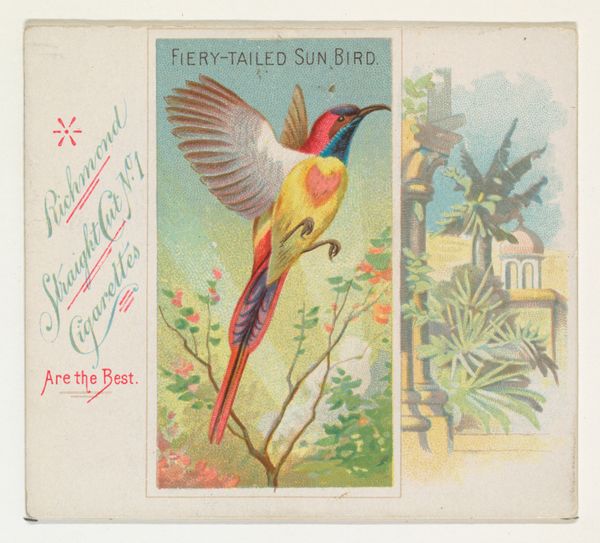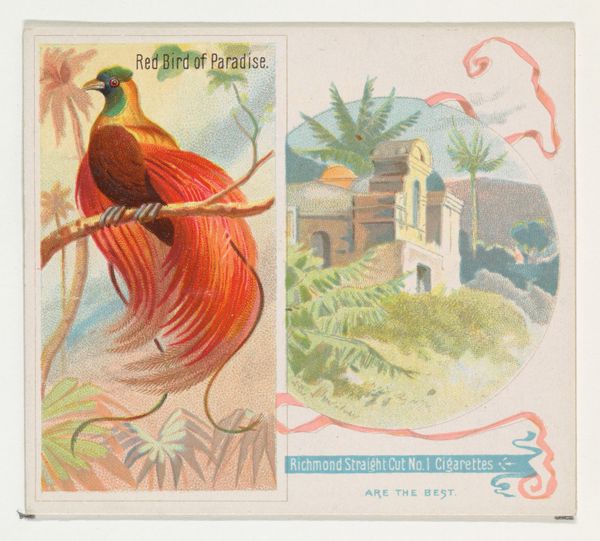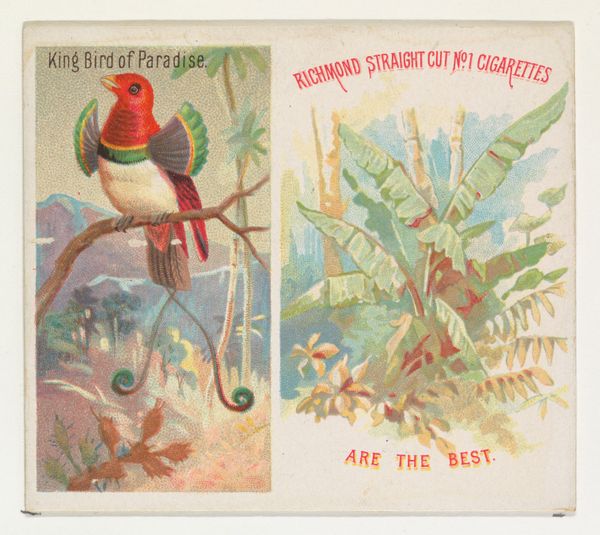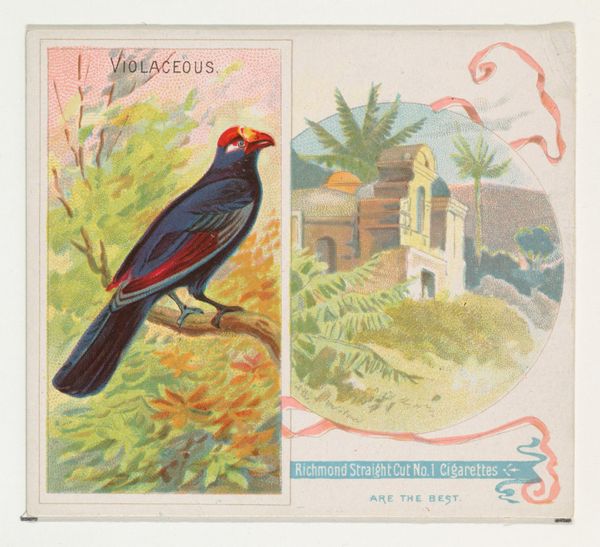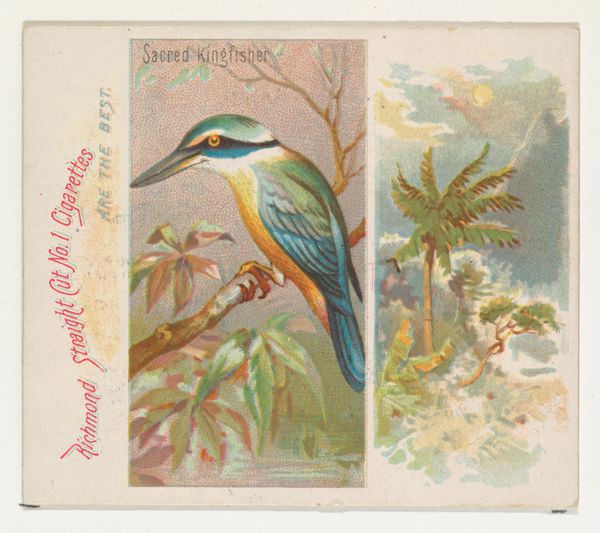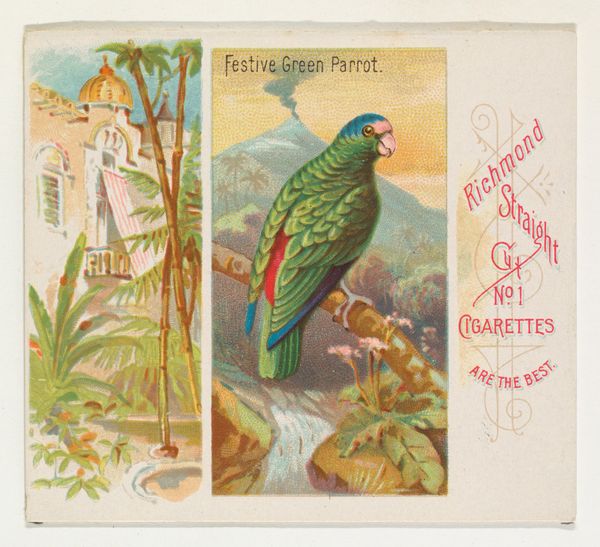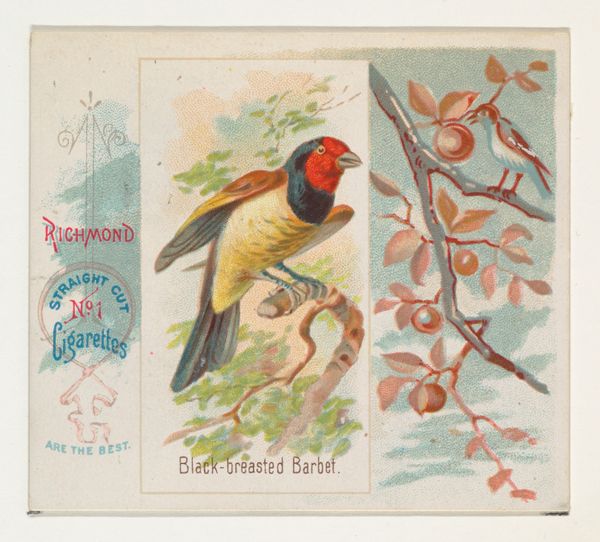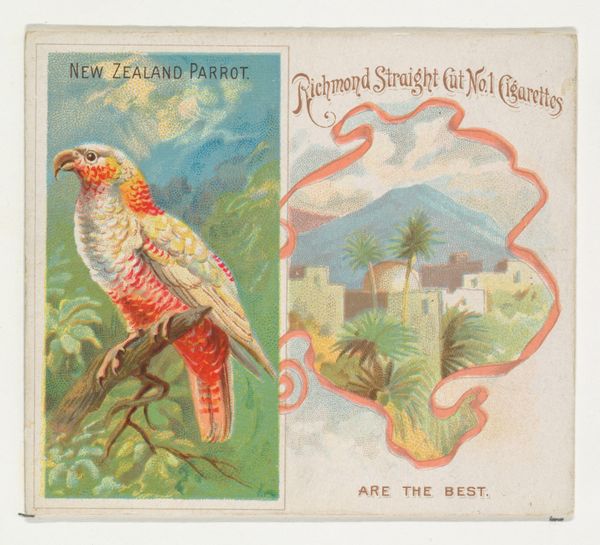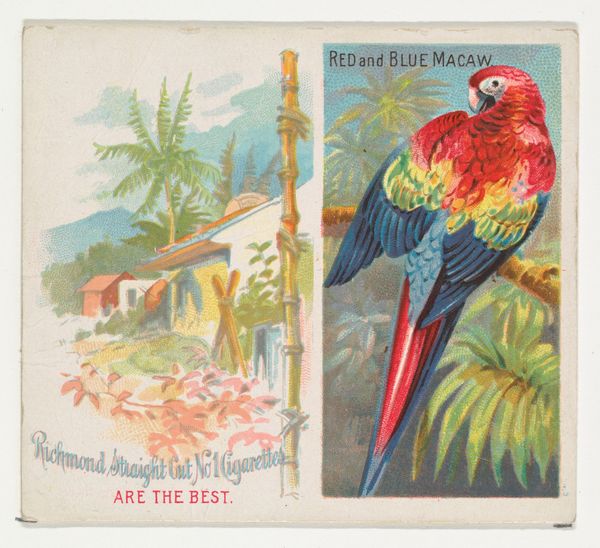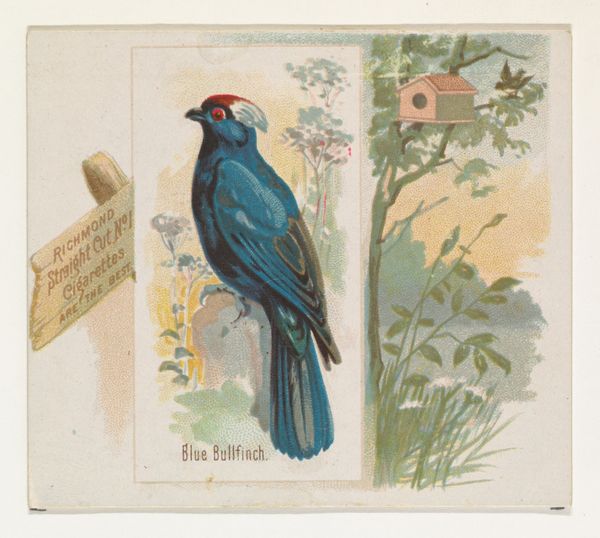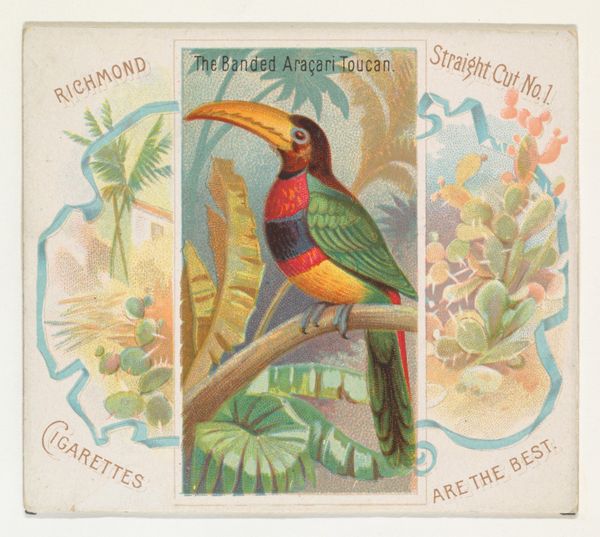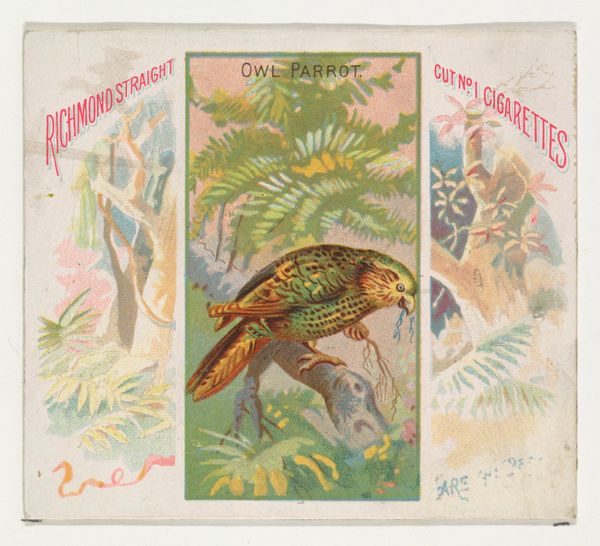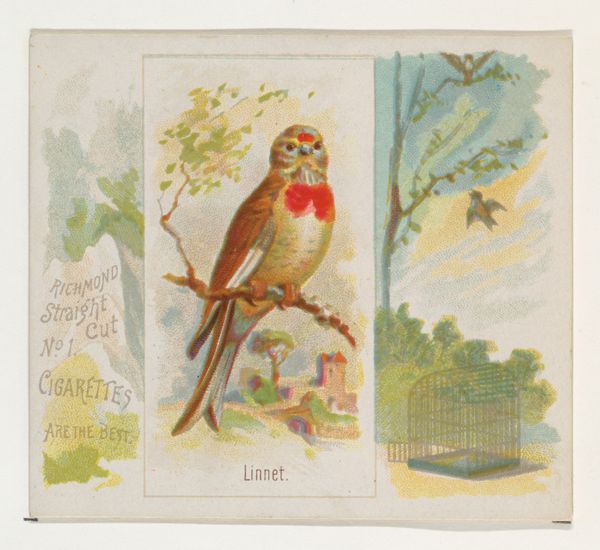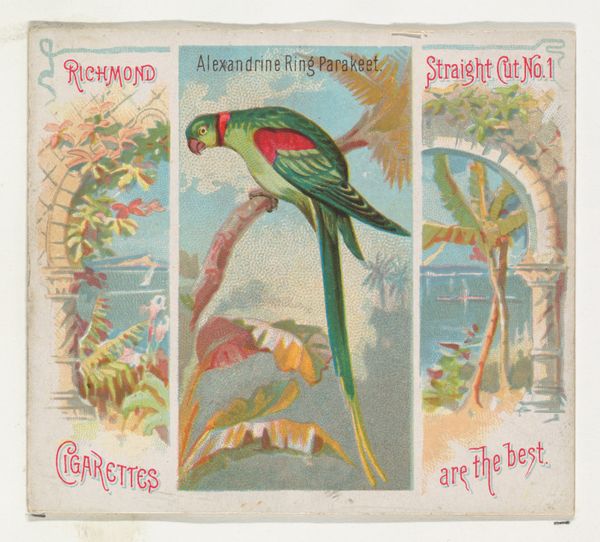
Schreiber's Hummingbird, from Birds of the Tropics series (N38) for Allen & Ginter Cigarettes 1889
0:00
0:00
lithograph, print
#
water colours
#
lithograph
# print
#
figuration
#
coloured pencil
Dimensions: Sheet: 2 7/8 x 3 1/4 in. (7.3 x 8.3 cm)
Copyright: Public Domain
Curator: Ah, here we have "Schreiber's Hummingbird," a print from the Birds of the Tropics series produced in 1889 by Allen & Ginter for their cigarettes. Editor: My immediate impression is how delicately rendered and colorful this is. The textures almost feel palpable despite the small scale. It reminds me a little of Ukiyo-e prints, with that emphasis on line and flattened perspective. Curator: That's a sharp observation. The aesthetic does lean into Japonisme, a popular movement at the time. These cards were, in a way, cultural ambassadors, introducing exotic landscapes and fauna to a wider public while simultaneously marketing tobacco. Editor: I see how the composition reinforces that aim. There’s a clear division—a vignette of a tropical dwelling juxtaposed against the close-up study of the hummingbird itself, almost like specimens neatly arranged. The limited color palette unifies the piece. Curator: Precisely. It highlights the social function of art. The commercial context shapes the artistic choices. Think of how mass production enabled accessibility and contributed to shaping public taste and desires related to exoticism and travel. Editor: And the stylistic approach invites a more contemplative viewing experience. Note the carefully controlled watercolours—particularly in the rendering of the bird's plumage. The coloured pencil work enhances the texture without overwhelming the composition. Curator: This really embodies the era’s intertwined relationship between commerce and culture. Cigarette cards were early forms of advertisement using popular art. Editor: By looking at its formal elements, it's surprising to discover so much meaning packed within its tiny format. Curator: Right, and considering the context of its production adds another layer of interest. Editor: Indeed, blending historical context and keen observation certainly heightens our understanding of such art.
Comments
No comments
Be the first to comment and join the conversation on the ultimate creative platform.
